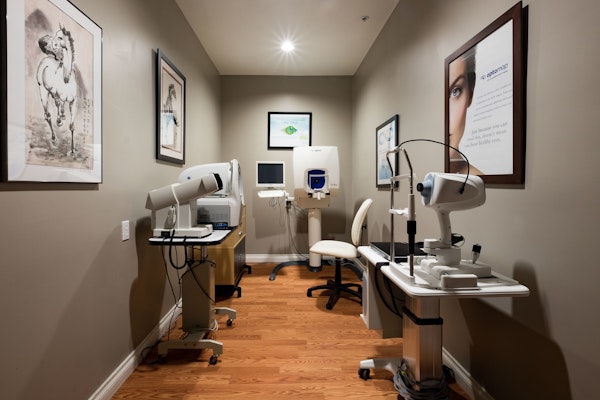What Causes Amblyopia (Lazy Eye)?
 Many people think of eye diseases and vision-compromising eye conditions as problems that primarily affect adults and elders. However, children can experience vision impairment from birth. One of the leading causes of decreased vision in children is amblyopia (lazy eye).
Many people think of eye diseases and vision-compromising eye conditions as problems that primarily affect adults and elders. However, children can experience vision impairment from birth. One of the leading causes of decreased vision in children is amblyopia (lazy eye).
Amblyopia occurs when the brain favors one eye for vision. The lesser-used eye gets weak, and vision in that eye worsens. Lazy eye symptoms include squinting, tilting or turning the head to see clearly, and a crossed eye. Here, optometrists at GW Eye Associates, who serve La Jolla, Carmel Valley, and San Diego, CA, discuss the causes of lazy eye and factors that put a child at risk for the condition.
Muscle Imbalance (Strabismus)
Muscle imbalance (strabismus) is the most common cause of lazy eye. The muscles responsible for positioning the eye ensure that they are in balance with each other. If the muscles are imbalanced, the eyes may not align properly. Strabismus can cause one or both eyes to cross in or turn out. Imbalance and misalignment prevent the eyes from working together to process images. As a result, the brain may favor one eye over the other.
Congenital or Juvenile Cataracts
Cataracts are clusters of proteins that build up on the eye’s lens. Cataracts cloud the lens and impair the vision. Cataracts are most common as a person ages, but they sometimes affect children as well. Congenital or juvenile cataracts that affect one eye create an imbalance in the vision that can lead to lazy eye. Lazy eye associated with congenital or juvenile cataracts requires urgent treatment because the condition can cause permanent vision loss.
Refractive Error Imbalance
Refractive errors such as nearsightedness, farsightedness, and astigmatism can develop in childhood. It is not uncommon for refractive errors to differ slightly between two eyes, which is not usually a problem. However, a significant difference in the vision prescription between each eye (particularly when a patient experiences farsightedness) can contribute to lazy eye.
Premature Birth
Premature birth or low birth weight is not necessarily a cause of lazy eye, but it is a risk factor. Preemies have a higher rate of lazy eye than children born full-term and within a healthy weight range. Premature birth and low birth weight may increase the risk of lazy eye because the muscles don’t have time to fully develop, which can lead to strabismus.
Genetic Predisposition
As with premature birth, genetic predisposition does not cause lazy eye, but it is a risk factor. Children born within a family with a history of lazy eye are more likely to develop the condition.
Treating Lazy Eye
If lazy eye is not treated, muscles will continue to weaken, and children can suffer permanent vision loss. Fortunately, treatment is usually straightforward and non-invasive. Most cases of lazy eye can be successfully treated with prescription lenses, the use of an eye patch, or a combination of both.
Contact GW Eye Associates
If you suspect your child has amblyopia (lazy eye), we urge you to contact our office online and request a comprehensive eye exam at your earliest convenience. Prompt diagnosis and treatment can restore clear vision and preserve eyesight.









